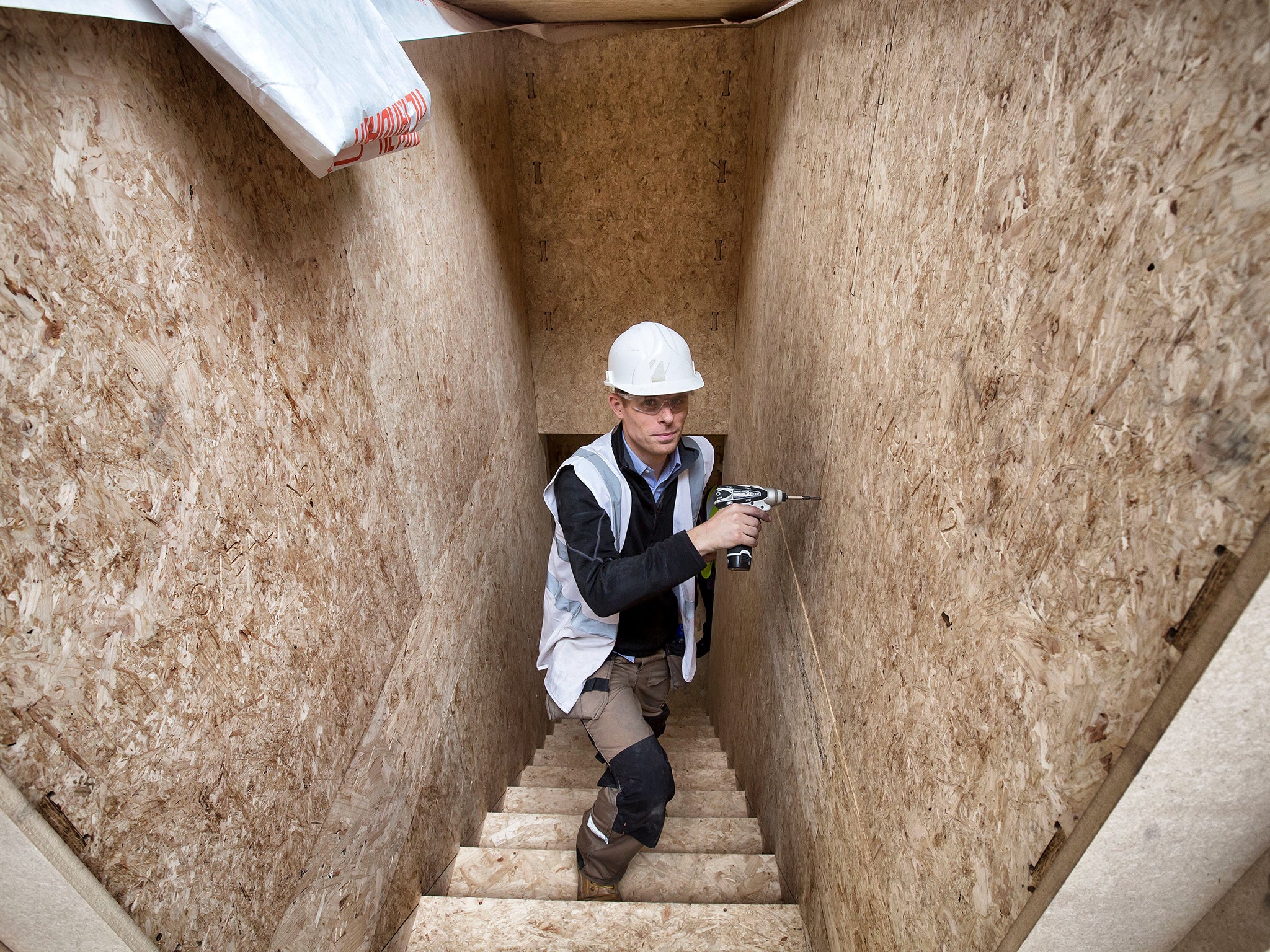WikiHouse 4.0 is a sign that we have entered the Third Industrial Revolution
What might a build-your-own home movement eventually do to the building industry?


Your support helps us to tell the story
From reproductive rights to climate change to Big Tech, The Independent is on the ground when the story is developing. Whether it's investigating the financials of Elon Musk's pro-Trump PAC or producing our latest documentary, 'The A Word', which shines a light on the American women fighting for reproductive rights, we know how important it is to parse out the facts from the messaging.
At such a critical moment in US history, we need reporters on the ground. Your donation allows us to keep sending journalists to speak to both sides of the story.
The Independent is trusted by Americans across the entire political spectrum. And unlike many other quality news outlets, we choose not to lock Americans out of our reporting and analysis with paywalls. We believe quality journalism should be available to everyone, paid for by those who can afford it.
Your support makes all the difference.We have entered the Third Industrial Revolution and this is what it feels like. A prototype of a WikiHouse 4.0 was on show at the recent London Design Festival. Anyone can download, adapt, “print” and assemble it in a few days, with no construction skills and for under £50,000. It’s a bit like building your own flat-pack home. Visitors were invited to bring a mobile phone to control the lighting, sensors and ventilation in the house.
My second example is the city of Hull, which is about to enjoy a renaissance. It used to top the list of the 50 worst places to live in the United Kingdom. The poet Philip Larkin said: “I wish I could think of one nice thing I could tell you about Hull, oh yes… It’s very nice and flat for cycling”. But now? On 3 September, Hull City Council granted planning permission for a new wind turbine production facility at Alexandra Dock. The old dock of silt-filled water and concrete will be transformed into Green Port Hull. It will be a service hub for the giant wind farms being built in the North Sea.
Finally, something quite different again. There is peer-to-peer lending. By the end of June 2014, it had provided almost £1.5bn to UK consumers and businesses. P2P, as it is called, is an online facility that enables people with surplus funds to lend them to other individuals or to businesses for a good return.
What might a build-your-own home movement eventually do to the building industry? What might the development of wind farms in the North Sea, and similar projects, eventually do to our traditional power stations? What might peer-to-peer lending eventually do to high-street banks?
Industrial revolutions are very big events. The First Industrial Revolution began in 1769 when James Watt invented the steam engine powered by coal. Steam engines were soon used to drive machinery in factories and then, most dramatically of all, to transport people and goods by rail. The Second Industrial Revolution started in the final decades of the 19th century with the discovery of oil, the invention of the internal combustion engine and the development of electricity. Industrial revolutions change everything.
What are the common features of these economic transformations? In his new book, The Zero Marginal Cost Society, Jeremy Rifkin, the economic and social theorist who lectures at the Wharton School of the University of Pennsylvania, provides an illuminating analysis. He writes that the great economic revolutions in history are “infrastructure revolutions”, and what makes these revolutions transformational is “the convergence of new communications media with new energy regimes”.
Mr Rifkin looks at the mediaeval period and notes first the development of watermills and windmills in the 10th and 11th centuries, with a typical watermill replacing the labour of 10 to 20 people. That was the new energy regime. Then came the invention of the printing press by Johannes Gutenberg in 1436. It was these two developments coming together, he argues, that facilitated the replacement of the feudal economy with the market economy.
In the 19th century, it was steam-powered printing and the telegraph that became the communications media for linking and managing a complex coal-powered rail and factory system. Likewise, Rifkin notes, in the 20th century it was the telephone, and later, radio and television, that served as the communications media for managing and marketing a more geographically dispersed oil, auto and suburban era and a mass consumer society.
Driving the Third Industrial Revolution will be the strangely named “Internet of Things”. We shall quickly get used to the notion. The Financial Times devoted two thirds of a page to the Internet of Things in last Monday’s edition. It will connect every machine, business, residence and vehicle in an intelligent network all embedded in a single operating system. This in turn will feed a continuous stream of Big Data to every business connected to the network. Rifkin sees it as being made up of three parts – a Communications Internet, an Energy Internet and a Logistics Internet.
We know what the Communications Internet is. We use it every day. I will shortly employ it to send this article by email to the editors of The Independent. But what, for instance, is or will be the Energy Internet? As an example, take a remote village in India. A bank of solar panels connected to a brick substation powers the local electricity micro grid. Inside the substation are batteries that allow the village to store power during the night or when there is cloud cover. A small computer transmits data back to the company’s offices in Jaipur. As local micro grids come on line, they connect with one another, creating regional networks that eventually link up to national grids, transforming the centralised power structure into what Rifkin calls “a distributed, collaborative, laterally scaled power network”.
And a Logistics Internet? This doesn’t yet exist anywhere. Transport of goods by road currently comprises competing firms of lorries, drivers and warehouses. But if the industry would accept an open supply web managed by sophisticated analytics and algorithms, companies could use the system to store items and route shipments in the most efficient manner possible.
The upshot of all this would be at once wonderful and disturbing. We should be developing a “sharing” economy as foretold by Facebook and Twitter, which allow people to share their lives, and by YouTube and Flickr, which allow people to share their creative content. Nowadays millions of people are also sharing cars and bicycles, homes, clothes, tools, toys and skills via the internet.
At the same time, however, Big Data, advanced analytics, algorithms, Artificial Intelligence and robotics are replacing human labour across the manufacturing industries, service industries and the knowledge and entertainment sectors, and rising up the skill ladder and affecting professional work itself.
So, finally, much of the productive economic activity of society is going to be placed in the hands of intelligent technology, supervised by small groups of highly skilled professional and technical workers. So what happens then, we must ask along with Rifkin, when so few people are gainfully employed that there are not enough buyers to purchase goods and services from sellers?
That is the big puzzle that lies ahead as the Third Industrial Revolution gets under way. No doubt our ancestors felt similarly confused as they boarded their first train or watched the Queen’s coronation on their black-and-white television sets, which had become available just in time for the great event more than 60 years ago.
Join our commenting forum
Join thought-provoking conversations, follow other Independent readers and see their replies
Comments